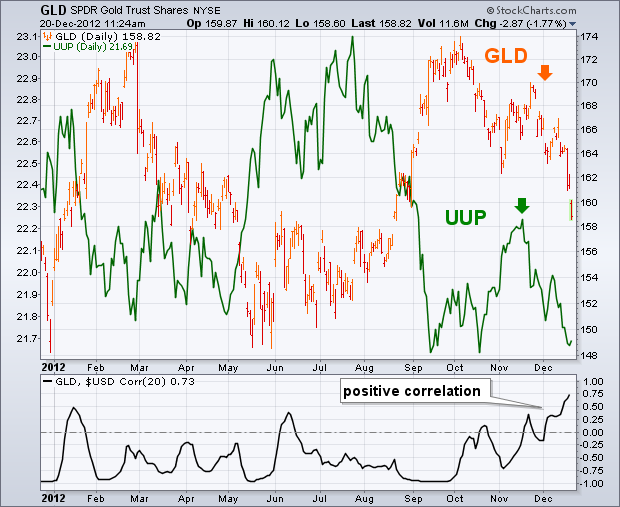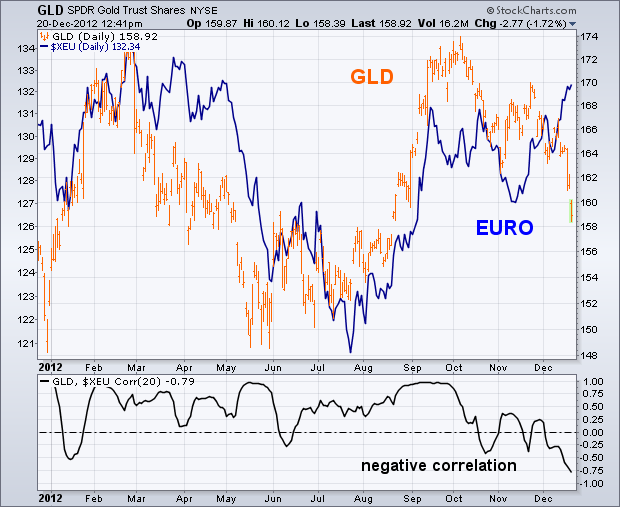One of the most consistent intermarket principles is that gold (and most commodities) usually trend in the opposite direction of the U.S. Dollar. That inverse relationship has broken down of late. Chart 1 compares the Gold Trust (GLD) to the Dollar Index (UUP) over the last year. Both markets have trended in opposite direction throughout most of the year -- until recently. The dollar bottom during October coincided with a peak in gold which is normal. What isn't normal is that both market have fallen together over the last month. The 20-day Correlation Coefficient (below chart) shows their correlation turning positive. When something unusual happens in intermarket work, there's usually a reason why. Let's examine the UUP a bit closer for some clues. Although the Dollar Index (UUP) measures the dollar against six currencies, it's dominated by the Euro. The Euro is the biggest foreign currency in the UUP with a weighting of 57% (Europe's four currencies comprise nearly three-quarters of the UUP). Chart 2 shows that the Euro and gold usually trend in the same direction. That was the case until mid-November when a rising Euro coincided with falling gold. The 20-day Coefficient (below chart) turned has turned negative which is unusual. So the answer to the recent change in the gold/currency relationship doesn't come from the Euro. It may be coming from the yen.








